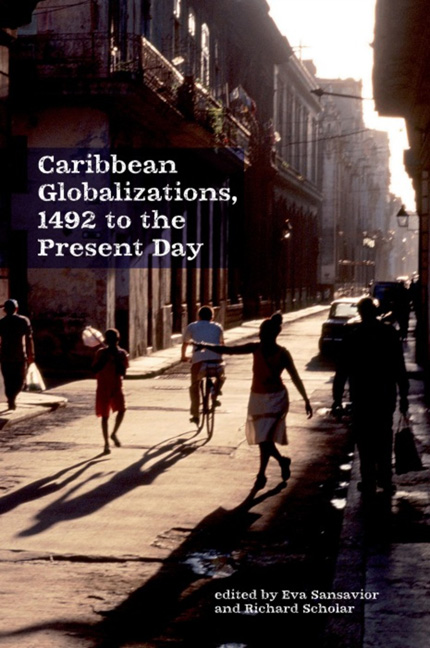Book contents
- Frontmatter
- Contents
- Contributors
- Prologue: Globalization, Globality, Globe-Stone
- Introduction
- I Globalizations in the Making
- 1 The Archipelago Goes Global: Late Glissant and the Early Modern Isolario
- 2 How Globalization Invented Indians in the Caribbean
- 3 Precocious Modernity: Environmental Change in the Early Caribbean
- 4 ‘Slaves’ in My Family: French Modes of Servitude in the New World
- 5 Paradoxical Encounters: The Essay as a Space of Globalization in Montaigne's ‘Des Cannibales’ and Maryse Condé's ‘O Brave New World’
- II The Complex Present
- Acknowledgements
- Index
2 - How Globalization Invented Indians in the Caribbean
from I - Globalizations in the Making
- Frontmatter
- Contents
- Contributors
- Prologue: Globalization, Globality, Globe-Stone
- Introduction
- I Globalizations in the Making
- 1 The Archipelago Goes Global: Late Glissant and the Early Modern Isolario
- 2 How Globalization Invented Indians in the Caribbean
- 3 Precocious Modernity: Environmental Change in the Early Caribbean
- 4 ‘Slaves’ in My Family: French Modes of Servitude in the New World
- 5 Paradoxical Encounters: The Essay as a Space of Globalization in Montaigne's ‘Des Cannibales’ and Maryse Condé's ‘O Brave New World’
- II The Complex Present
- Acknowledgements
- Index
Summary
When Columbus nearly tripped over islands of the Caribbean on his way to Asia in 1492, he accidentally set in motion a chain reaction in which his own stumbling would prove of little more than fleeting and transitory importance. The Spanish queen swiftly and eagerly dispatched a second expedition to claim and further explore this place that Columbus had lumbered across, only to discover that the economic findings from the Caribbean would prove far too valuable to leave in private hands, let alone those of a Genoese seaman.
While the first voyage was a mere chance encounter, the second voyage marked the beginning of a deliberate evaluation of the islands, their inhabitants, and their resources. In place of three smallish ships, the second journey encompassed no fewer than three cargo ships and fourteen exploratory vessels (‘caravels’), some of which were sent to investigate beyond Cuba and Hispaniola, the large islands Columbus had partially touched upon.
More impressive still, and an early indication of economic ambitions for these islands, were the numbers of Spaniards on board the ships. Instead of a crew of eighty-five, these seventeen vessels carried 1,200 men. But that group would be only the first wave of Spanish settlement.Barely six weeks after selecting a place to discharge its human and animal cargo, twelve of the seventeen ships departed for Spain to pick up another large group of immigrants. Spaniards were heading for the Caribbean in overwhelming numbers.
A century later, by contrast, the first English settlers in North America appeared in groups of approximately only one hundred. The Mayflower carried 102 passengers, the first and second Roanoke settlements held only 108 and 115 individuals respectively, and Jamestown had a mere 104. While it has become commonplace to refer to these small English toeholds as ‘settlements’ and as confirming an intent to remain (see Seed, 1994: 16–40), Spaniards demonstrated their intent to occupy the New World far more decisively by arriving in significant numbers.
Spaniards also occupied the Caribbean far more swiftly. Settlers disembarked only fifteen months after the first European ever caught a glimpse of the islands and furthermore sailed on only the second European voyage ever to the Caribbean. By contrast, Englishmen cautiously commenced settlement in the 1580s, nearly a century after their ships first sighted North America. Even after these tiny colonies began, years rather than months intervened between efforts.
- Type
- Chapter
- Information
- Caribbean Globalizations, 1492 to the Present Day , pp. 58 - 82Publisher: Liverpool University PressPrint publication year: 2015



